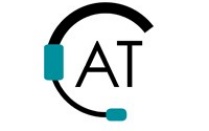Book Chapters
Book Chapter
B. Godin & J. Lane (2014), Making and remaking the measurement of science and technology: The international dimension. In Maximilien Mayer, Mariana Carpes and Ruth Knoblich (Eds.), The global politics of science and technology (II): Perspectives, cases and methods (pp. 163-177). Springer-Verlag Berlin Heidelberg. Retrieved from http://bit.ly/godin-lane
Abstract
In most if not every discussion of policy, statistics play a leading role. Statistics serve as evidence, so it is claimed. Such is the case with statistics on science and technology. This chapter is concerned with documenting how, over history, the international dimension got into statistics on science and technology. More specifically, the chapter documents the policy issue that has influenced the development of official statistics after World War II — industrial competitiveness between countries or "gaps" between Europe and the United States — and the representation of science and technology involved in the statistics.
Using the OECD as an emblematic example, we suggest that the measurement of the international dimension of science and technology has not progressed much in the last 40 years. The same indicators that defined the phenomenon in the 1970s are those included in the more recent standardized manuals of globalization.
Book Chapter
V. Stone (2014), Targeting stakeholders and tailoring knowledge as communication strategies in assistive technology: Three randomized controlled case studies. [2nd Edition KT Casebook in the] Project of the center on knowledge translation for disability and rehabilitation research (KTDRR). Retrieved from http://ktdrr.org/products/ktcasebook/targeting_stakeholders2016.html and http://ktdrr.org/index.html
Abstract
This case study focuses on implementation of a NIDRR-supported research project that developed and evaluated knowledge translation (KT) strategies designed to communicate new knowledge to rehabilitation technology stakeholders. Two strategies were addressed:tailor-and-target and target-only. Their communication effectiveness was evaluated in a series of three randomized controlled studies, focusing respectively on stakeholders of augmentative and alternative communication (AAC), recreational access (RecAcc) and wheeled mobility (WhMob) technologies. Each study used the two strategies as interventions that communicated new knowledge. The traditional diffusion method was used as the control. Participants represented diverse stakeholders of the respective technology.
Search using keywords or title.
Please feel free to contact us to discuss issues of mutual interest.
